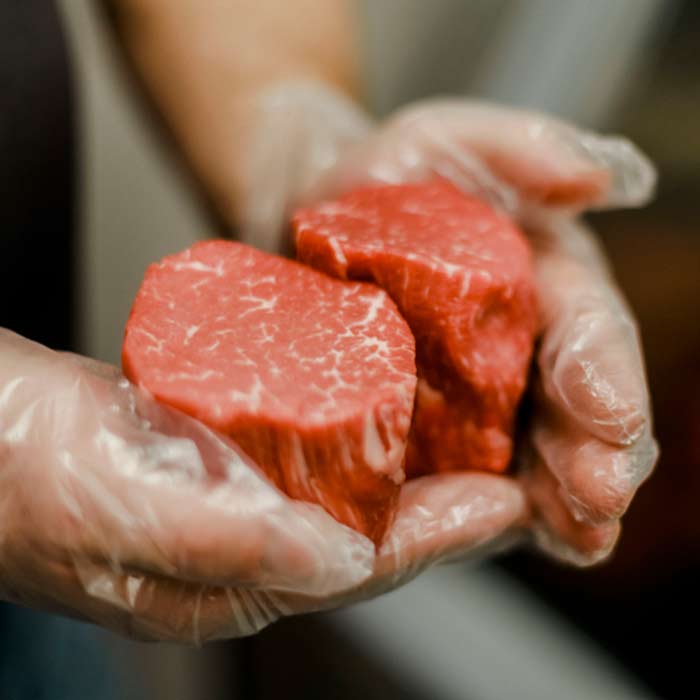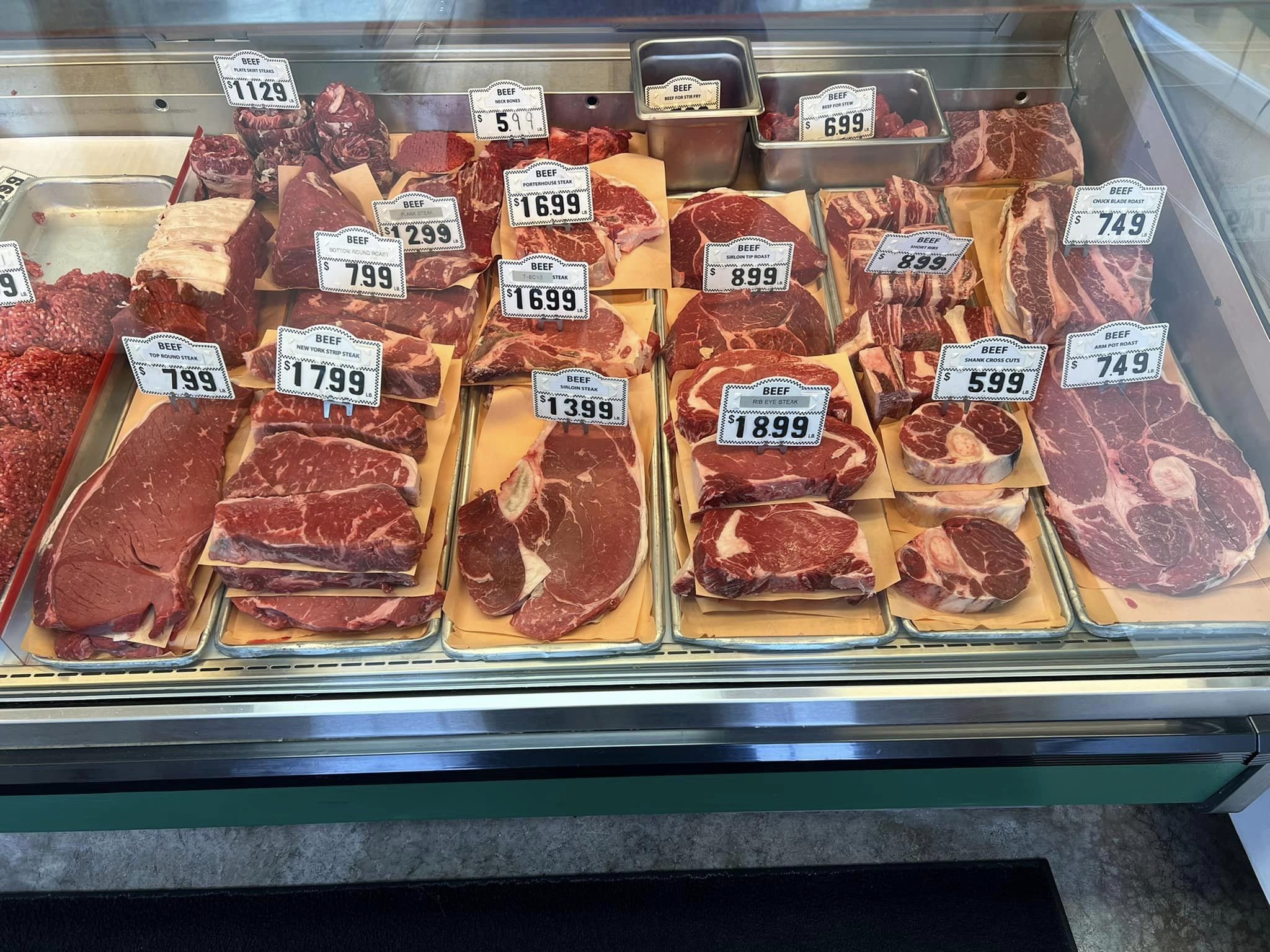Discover the Art of the Butcher's Cut in a Modern Meat Market
In the ever-evolving landscape of modern-day meat markets, the butcher's cut has actually transcended its typical origins, merging age-old craftsmanship with modern methods. What really establishes the contemporary butcher apart is their ability to create a deeper connection between consumers and the origins of their meat.
Development of Butchery Techniques
The advancement of butchery strategies shows an abundant tapestry of innovation and adjustment driven by improvements in innovation, adjustments in customer need, and a much deeper understanding of meat science. Historically, butchery was a craft gave via generations, with methods developed over centuries to make best use of yield and flavor. Nevertheless, the industrial transformation ushered in automation, changing typical methods and enabling large handling.
The mid-20th century saw butchery methods better improved by scientific insights into muscular tissue biology and meat aging, enhancing both tenderness and preference. Technologies like vacuum product packaging and refrigeration extended product shelf-life, permitting butchers to branch out offerings and improve quality assurance. This duration additionally marked the increase of customized tools, such as band saws and meat slicers, which raised precision and efficiency in meat handling.

Digital systems currently aid in monitoring animal provenance and enhancing cuts to meet particular customer preferences. Furthermore, a renewal in artisanal butchery has actually arised, mixing standard abilities with modern-day understanding to provide to customers seeking moral and sustainable meat alternatives.
Comprehending Meat Cuts
Understanding the complexities of meat cuts is necessary for both butchers and consumers seeking quality and value. For butchers, exact cuts show ability and respect for the craft, making sure very little waste and ideal return.

Recognizing muscular tissue make-up is crucial; muscular tissues used a lot more often by the pet often tend to be harder and are best fit for slow cooking techniques, while less-used muscles, like those found in the loin, are extra tender and perfect for grilling or roasting. Familiarity with these distinctions encourages consumers to make educated selections, enhancing their cooking endeavors.
Picking Quality Meat
Picking the ideal meat includes more than just choosing a visually attractive item from the screen. bagley farms meat market edwardsville il. The art of picking top quality meat requires a critical eye and expertise of certain attributes that indicate freshness and excellence. Pay interest to the shade; beef must have click reference an intense, cherry-red hue, while lamb should display a soft pink tone, and pork a pale pink. This shows the meat is fresh and hasn't been revealed to oxygen for too long.
Secondly, consider the marbling, which refers to the white flecks of fat within the muscular tissue. Appropriate marbling is a vital sign of tenderness and taste, as it melts throughout food preparation, improving the meat's juiciness. Remember, higher marbling usually associates with exceptional high quality cuts, such as USDA Prime.
Structure is an additional important aspect; meat needs to feel firm to the touch, not slimed or excessively soft. Additionally, bear in mind the aroma. Fresh meat must have a tidy, neutral odor, without any sour or off-putting smells.
Matching Cuts With Food Preparation Techniques

On the other hand, tougher cuts like brisket and chuck roast are abundant in collagen, which damages down right into jelly when prepared slowly. These cuts are ideal for braising or slow roasting, enabling the meat to soften in time and create deep, intricate flavors. Similarly, cuts such as short ribs and pork shoulder get on well with slow-cooking approaches, where extended cooking times transform their robust structures right into delicious meals.
Lamb shanks and oxtail, which require extended cooking to soften, are excellent prospects for cooking or slow-moving simmering. These methods coax out abundant, passionate tastes while keeping moisture. By understanding the unique characteristics of each cut, chefs and home chefs alike can raise their culinary developments, ensuring each meal is both satisfying and memorable.
The Butcher's Duty Today
Browsing the evolving landscape of the contemporary meat market, the butcher's duty today expands beyond simple preparation of cuts. Contemporary butchers are cooking craftsmens, educators, and advocates for lasting techniques. They link the void between the farm and the fork by making sure ethical sourcing, recognizing animal husbandry, and prioritizing transparency in the supply chain. This change reflects the expanding consumer demand for quality over amount, where provenance and animal welfare are vital.
In enhancement to crafting accurate cuts, butchers now engage directly with clients, offering cooking guidance and customizing choices to fit specific requirements and preferences. Their knowledge in meat aging, marbling, and taste accounts equips consumers to make enlightened decisions, boosting their culinary experiences. This tailored solution exemplifies the butcher's evolving function as a trusted expert in the kitchen area.
In addition, butchers are essential in reducing waste, making use of whole pets to create diverse items such as sausages and supplies. This detailed method not just appreciates the animal however go to website likewise aligns with modern sustainability goals. In this way, the modern-day butcher embodies both tradition and development, adapting to an ever-changing market while maintaining the artistry and integrity of their craft.
Final Thought
Proficiency in comprehending varied meat cuts and top quality indicators empowers butchers to give informed recommendations, aligning certain cuts with ideal cooking methods. By recognizing historic practices while accepting contemporary demands, the butcher's duty continues to be crucial in today's advanced meat market.